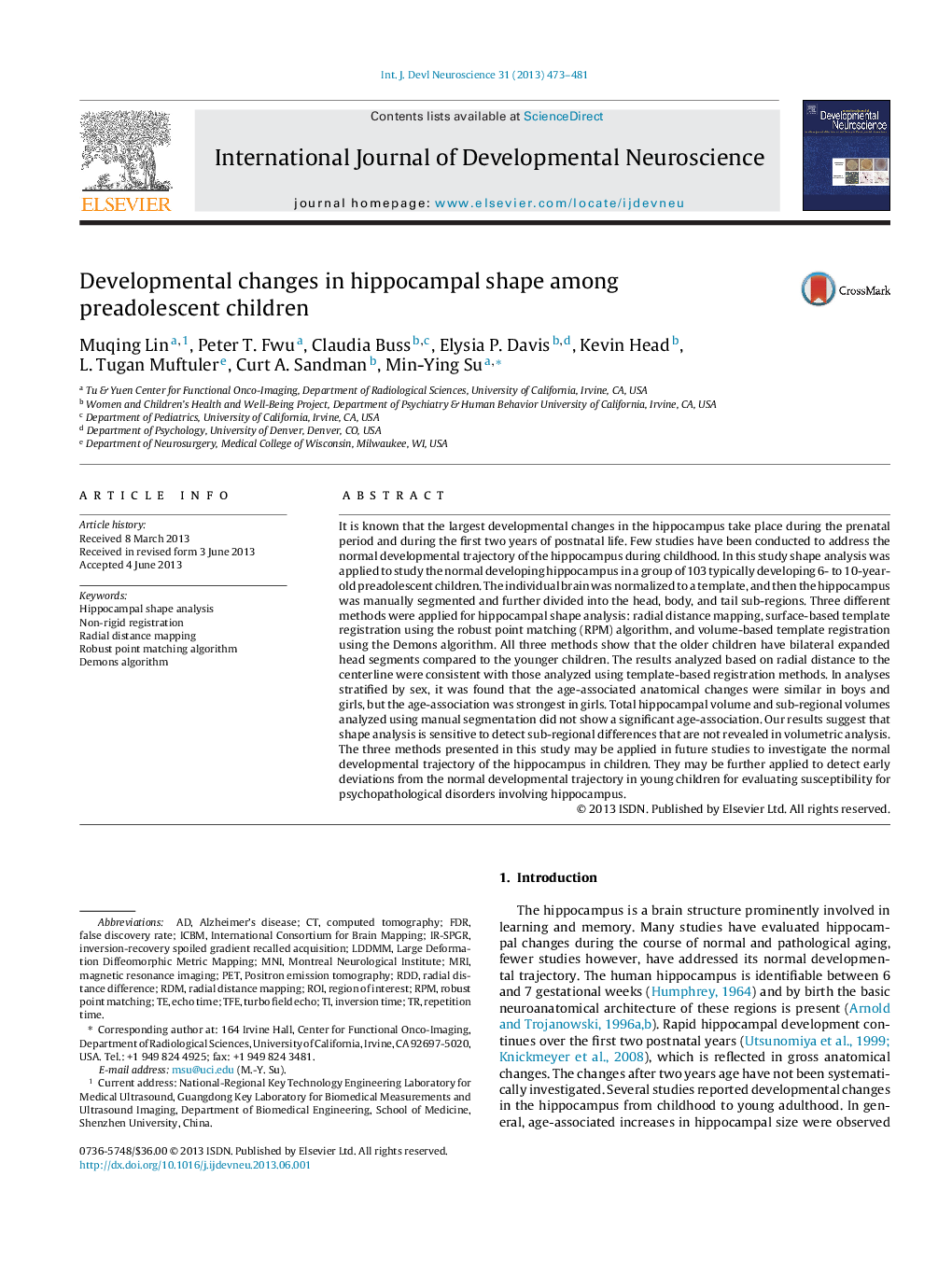| Article ID | Journal | Published Year | Pages | File Type |
|---|---|---|---|---|
| 5893911 | International Journal of Developmental Neuroscience | 2013 | 9 Pages |
â¢The shape of normal developing hippocampus from 6 to 10 years old children is studied.â¢The radial distance mapping and two template-based registration methods were used to evaluate the age-associated shape changes.â¢All three methods show that the older children have bilateral expanded head segments compared to the younger children.â¢The manual volumetric measurement did not show significant results.â¢Registration methods can be used to study developmental trajectory of the shape of hippocampus.
It is known that the largest developmental changes in the hippocampus take place during the prenatal period and during the first two years of postnatal life. Few studies have been conducted to address the normal developmental trajectory of the hippocampus during childhood. In this study shape analysis was applied to study the normal developing hippocampus in a group of 103 typically developing 6- to 10-year-old preadolescent children. The individual brain was normalized to a template, and then the hippocampus was manually segmented and further divided into the head, body, and tail sub-regions. Three different methods were applied for hippocampal shape analysis: radial distance mapping, surface-based template registration using the robust point matching (RPM) algorithm, and volume-based template registration using the Demons algorithm. All three methods show that the older children have bilateral expanded head segments compared to the younger children. The results analyzed based on radial distance to the centerline were consistent with those analyzed using template-based registration methods. In analyses stratified by sex, it was found that the age-associated anatomical changes were similar in boys and girls, but the age-association was strongest in girls. Total hippocampal volume and sub-regional volumes analyzed using manual segmentation did not show a significant age-association. Our results suggest that shape analysis is sensitive to detect sub-regional differences that are not revealed in volumetric analysis. The three methods presented in this study may be applied in future studies to investigate the normal developmental trajectory of the hippocampus in children. They may be further applied to detect early deviations from the normal developmental trajectory in young children for evaluating susceptibility for psychopathological disorders involving hippocampus.
